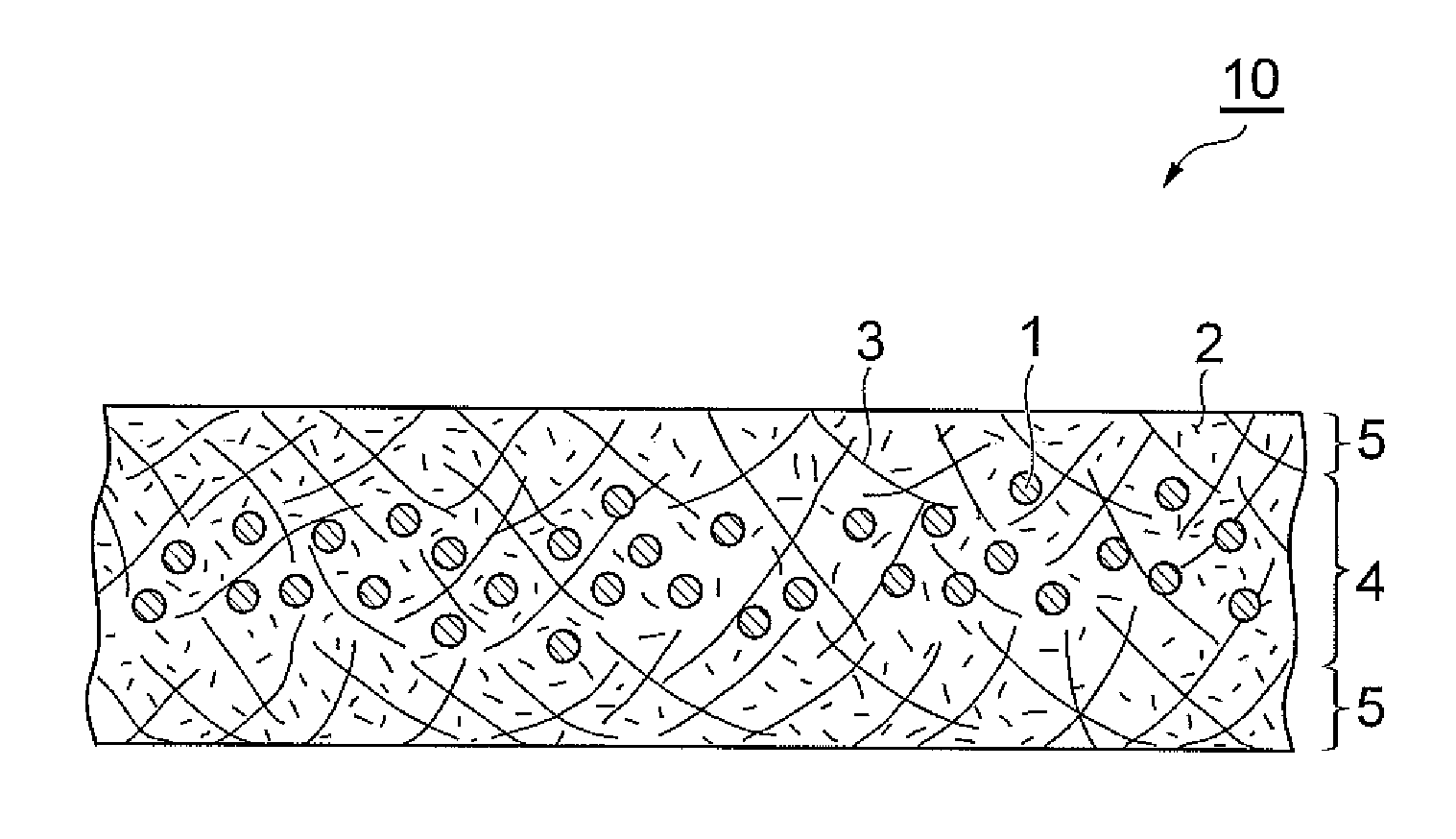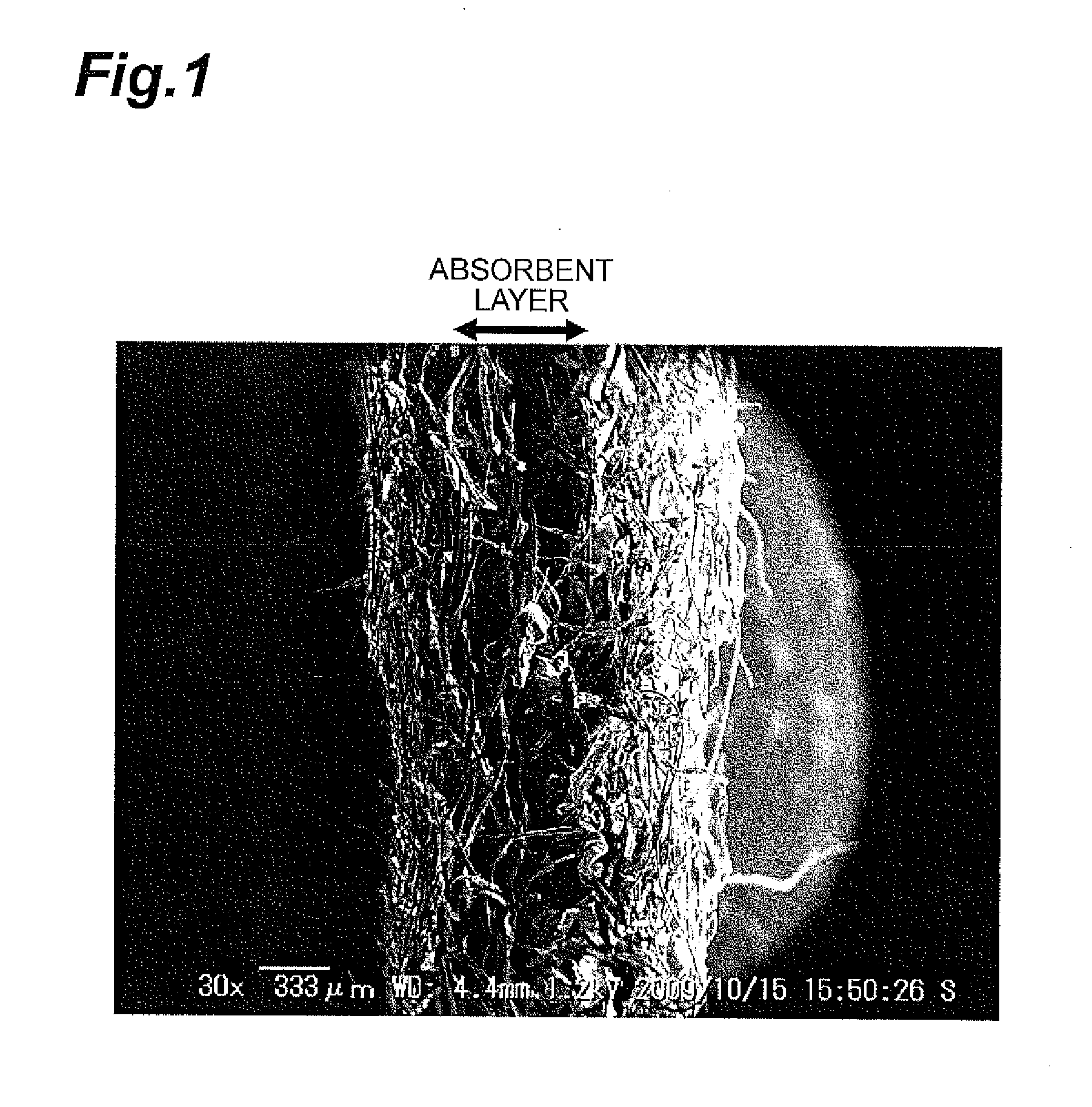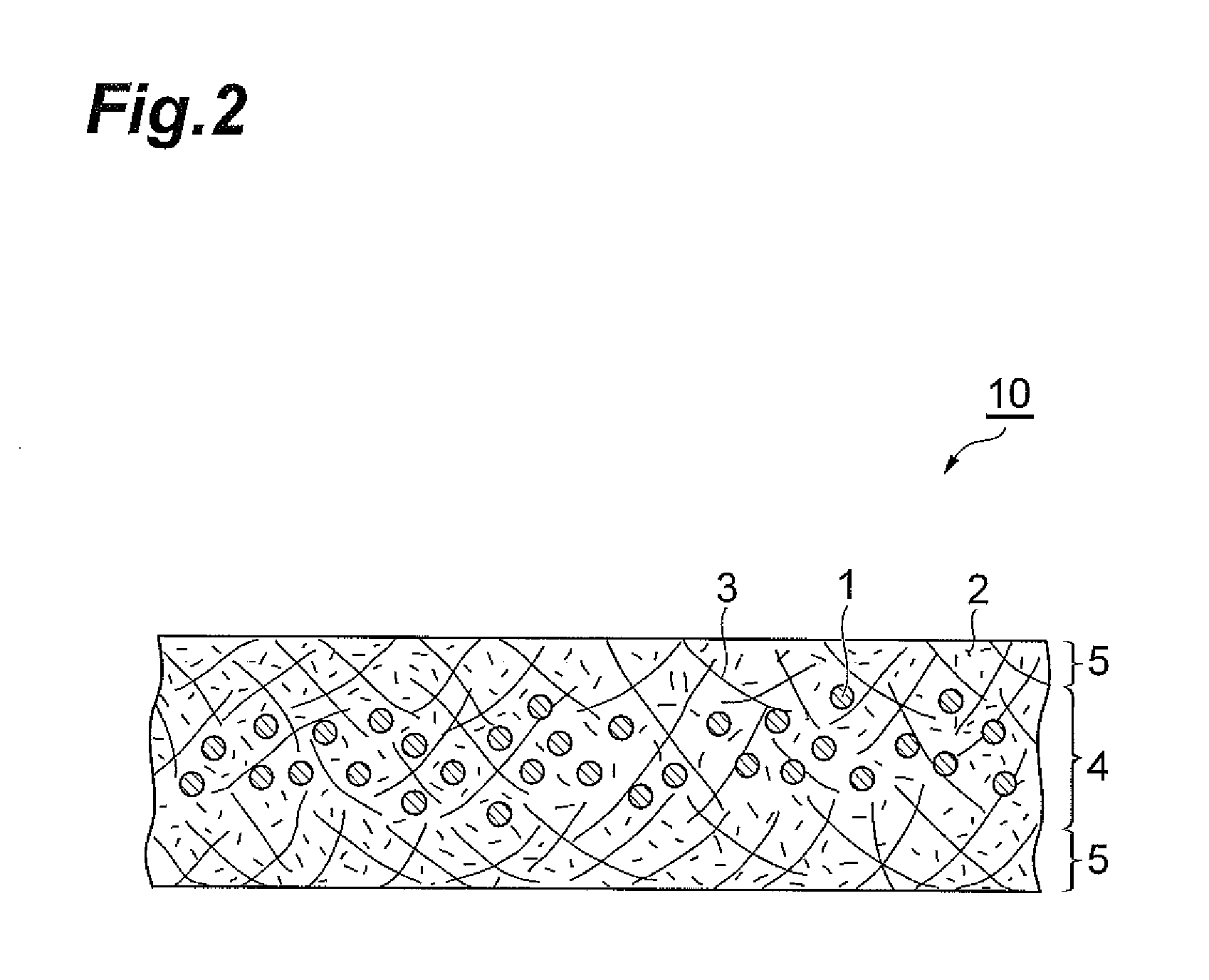Absorbent Sheet and Method for Producing Same
- Summary
- Abstract
- Description
- Claims
- Application Information
AI Technical Summary
Benefits of technology
Problems solved by technology
Method used
Image
Examples
example 1
[0348]An undersheet (16 g / m2) constructed of hydrophobic fibers (PET / PE core-in-sheath fibers manufactured by Toyobo Co., Ltd., 1.7 deniers, fiber length 40 millimeters) was conveyed at 3.5 m / min. Hydrophilic fibers (a treatment-processed article of roll pulp manufactured by Rayonier, Inc. was hammer crushed) and hydrophobic fibers (PET / PE core-in-sheath fibers manufactured by Toyobo Co., Ltd., 11 deniers, fiber length 50 millimeters) were mixed at a weight ratio of 6:4 and this mixture was placed uniformly on the undersheet such that the area density became 50 g / m2, and water was sprayed thereon at an area density of 150 g / m2. On this mixture, particles having a particle size of 106 to 300 micrometers (average particle size of about 200 micrometers) out of the absorbent resins (5) were uniformly dispersed such that the area density became 100 g / m2, and further water was sprayed such that the area density became 150 g / m2. These resins and fibers were passed between rolls having proj...
example 2
[0349]Hydrophilic fibers (a treatment-processed article of roll pulp manufactured by Rayonier, Inc. was hammer crushed) and particles having a particle size of 106 to 300 micrometers (average particle size of about 200 micrometers) out of the absorbent resins (5) were mixed at a weight ratio of 1:4. At this time, the water content was 4 mass % with respect to the absorbent resins. Water of the same weight as the absorbent resins was sprayed thereon with the spray, hot-air drying (drying temperature 140° C., drying time 2 minutes, air speed 5 m / s) was performed in the drying furnace, and composite compositions thus produced were stored in a tank. The water content after dehydration and drying was 3 mass % with respect to the absorbent resins. An undersheet (16 g / m2) constructed of hydrophobic fibers (PET / PE core-in-sheath fibers manufactured by Toyobo Co., Ltd., 1.7 deniers, fiber length 40 millimeters) was conveyed at 30 m / min. On this undersheet, a mixture of the composite composit...
example 3
[0350]Other than using the absorbent resins (2), the same method as that of Example 2 was used to acquire an absorbent sheet. This sheet was referred to as an absorbent sheet (3).
PUM
| Property | Measurement | Unit |
|---|---|---|
| Temperature | aaaaa | aaaaa |
| Fraction | aaaaa | aaaaa |
| Force | aaaaa | aaaaa |
Abstract
Description
Claims
Application Information
 Login to View More
Login to View More - R&D
- Intellectual Property
- Life Sciences
- Materials
- Tech Scout
- Unparalleled Data Quality
- Higher Quality Content
- 60% Fewer Hallucinations
Browse by: Latest US Patents, China's latest patents, Technical Efficacy Thesaurus, Application Domain, Technology Topic, Popular Technical Reports.
© 2025 PatSnap. All rights reserved.Legal|Privacy policy|Modern Slavery Act Transparency Statement|Sitemap|About US| Contact US: help@patsnap.com



